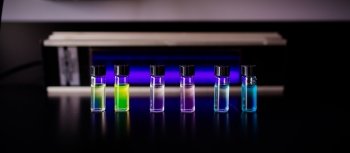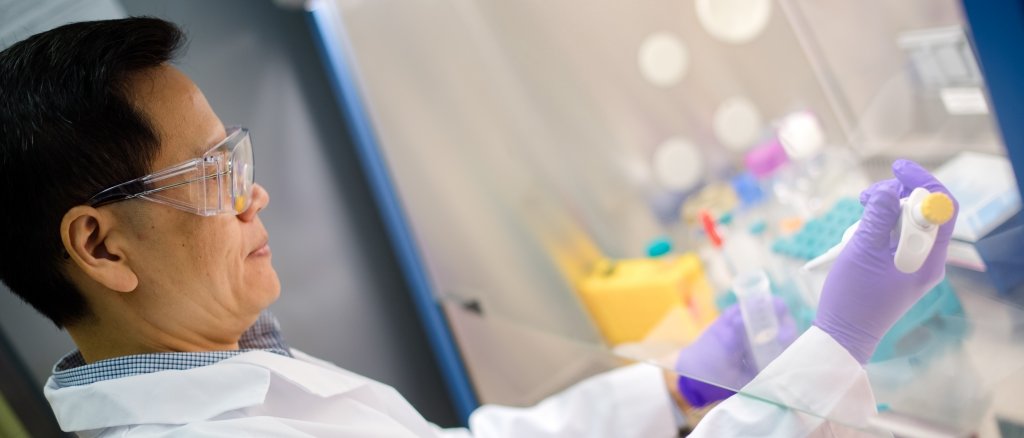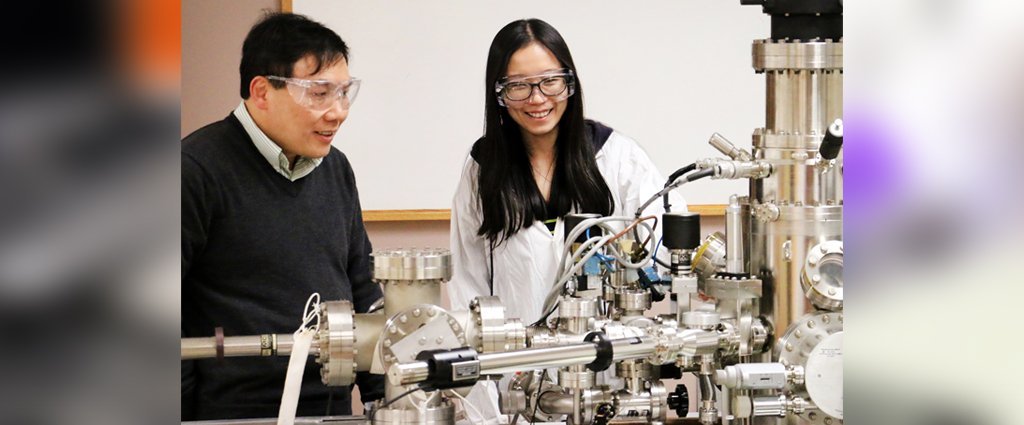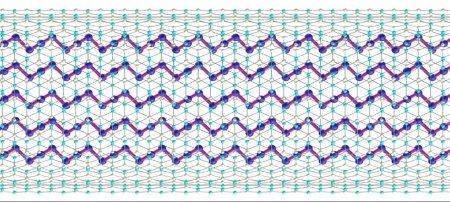Yoke Khin Yap, professor of physics, has won the 2018 Research Award.
It’s a story well-ingrained in our collective consciousness—the tale of the scientist laboring long hours for months or even years in dogged pursuit of answers. It’s a story we like to tell because it assures us someday our hard work will pay off. And in Yoke Khin Yap’s case, it certainly has.
The professor of physics has pursued a research path that embodies this story of science, taking an idea about certain nanomolecules from mere theory to, very soon, commercialized product. He also won the Bhakta Rath Research Award with student Chee Huei Lee in 2011. Yap’s contributions to fundamental understanding of boron-carbon-nitrogen nanostructures, the development of transistors without semiconductors, and commercialization of high-brightness fluorophores for medical imaging have been honored with his receipt of Michigan Tech’s Research Award.
Ravindra Pandey, professor of physics and department chair, nominated Yap.
“Yap is one of the leaders in establishing application of boron nitride-based nanomaterials for nanoscale devices,” Pandey says. “He has also led the efforts to encourage technology development and commercialization activities at Michigan Tech.”
Lest Yap take too much pride in the award, however, Pandey adds that conducting research isn’t the sole job of a professor: “Following the tradition of our department, he is now looking forward to teaching a large introductory physics course after receiving the Research Award.”
Stepping Stones
Somewhat mischievously, Yap credits some of his success to the quietude and space for thinking deeply that a place like Michigan Tech affords away from the chatter and noise of a large city. Though some may find the Houghton’s relative remoteness unsettling, Yap says that for the past 15 years, on the banks of the Innovation Shore, he has been able to work quietly away at puzzling through big questions.
One of these big questions is whether transistors really need semi-conductors to function. Answer: No, they don’t.
Transistors are core to the central processing units (CPU) of computers. They act as either amplifiers or switches, either passing an electrical current through a circuit board or controlling the flow of the current. There are millions of transistors in CPUs, generally made with semiconducting silicon channels. Silicon, though a semiconductor, does offer some resistance to the flow of electricity, which causes the channels to heat up. The smaller the transistors, the worse the problem. This heat can literally “fry” a CPU.
“Imagine you are driving a car from Hancock to Houghton,” Yap says by way metaphorical explanation. “The lift bridge is the semi-conducting channel. You have resistance in the form of traffic. If you don’t have the bridge, how will you go across the canal? What if you make cars that can ‘jump’ a little bit, so they just need a stepping stone. You can cross without a traffic jam.
“The way for an electron to do that is quantum tunneling. This quantum mechanics process does not generate heat but allows electrons to cross. If an electron can tunnel across without creating heat, it can bring the message across, and we can make a transistor without causing heat, without causing a traffic jam.”
The solution is boron nitride nanotubes (BNNTs) coated with gold nanoparticles called quantum dots just one or two nanometers apart. By applying a nominally higher potential energy, the electrons are able to “tunnel” or “jump” between the nanoparticles. No semiconductor is needed to make such tunneling transistor channels.
Somewhat paradoxically, BNNTs are electrically insulating, which led some in the physics community to offer resistance. However, BNNTs can be used as a switch to stop electrons from flowing on super-conductive materials like graphene, as demonstrated by Yap’s follow-up work on graphene-BNNT switches. BNNTs are also superhydrophobic, transparent and anticorrosive, which means they can potentially be used in difficult chemical and thermal conditions. Any scientist conducting research in challenging environments knows the benefits such a breakthrough.
“A boron nitride nanotube is such a beautiful nanomolecule,” he says. “They are the first nanomaterial designed by theory that was able to be realized. It is potentially a breakthrough in physics, to theoretically design something and then make it.”
High-Brightness Fluorophores
Yap’s other line of research is also at the nanoscale, but otherwise bears little likeness to BNNTs. High-brightness fluorophores are dyes that fluoresce in different colors and degrees of brightness. They are used in machines called flow cytometers to detect diseased cells in blood.
In 2014, Yap and his research laboratory team were accepted for the second time into the National Science Foundation’s I-Corps team program, which trains scientists to do market research. The I-Corps project allowed his team to identify the market of flow cytometry and develop a viable business plan. In 2014, Yap established StabiLux Biosciences in partnership with Superior Innovations, a for-profit company founded with alumni donations to nurture Michigan Tech innovations. Yap is currently on sabbatical at the University of Michigan in Ann Arbor, exploring new collaboration on his work on high-brightness fluorophores.

Using fluorescent dyes can help medical personnel differentiate cells in the body. Stabilux’s fluorophores offer enhanced signals to enable detection of cells that are not detectable using current methods.
“We can use fluorophores to recognize biological substances, for example protein and RNA,” Yap says. “Currently we are looking into antigen conjugations. This helps us to understand the antigen profile on the surface of the cell, which helps us differentiate what kind of cells we have. The fluorophore-tinted cells are so bright they allow researchers to better analyze types of cells.”
Years in the making, Yap’s relentless pursuit of answers down multiple research paths exemplifies his commitment to seeing a project through to its conclusions. More recently, his work on nano-environment protection and 2-D materials beyond graphene have also started to gain attention.
Casually, Yap says: “I might have to spend another 15 years on this research.”
Michigan Technological University is an R1 public research university founded in 1885 in Houghton, and is home to nearly 7,500 students from more than 60 countries around the world. Consistently ranked among the best universities in the country for return on investment, Michigan's flagship technological university offers more than 185 undergraduate and graduate degree programs in science and technology, engineering, computing, forestry, business, health professions, humanities, mathematics, social sciences, and the arts. The rural campus is situated just miles from Lake Superior in Michigan's Upper Peninsula, offering year-round opportunities for outdoor adventure.






Comments